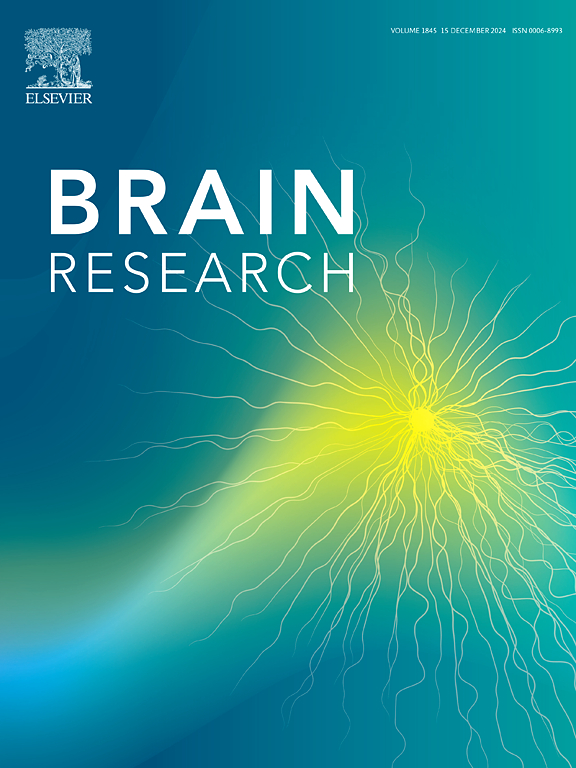Two-hit immune activation induced autism-like phenotypes in mice: The underlying mechanism may involve the lung–brain axis
IF 2.6
4区 医学
Q3 NEUROSCIENCES
引用次数: 0
Abstract
Neuroinflammation plays important roles in the pathogenesis and development of autism spectrum disorder (ASD). However, the mechanism by which peripheral organ inflammation affects neuroinflammation is still unclear. This study aimed to investigate that the interaction between the lungs and the brain as a potential mechanism underlying this effect. Ovalbumin (OVA) can induce neuroinflammation and cause neurotoxicity, leading to tissue damage or cognitive memory impairment. OVA – induced maternal immune activation (MIA) provides a stable animal model for studying ASD and other human neurodevelopmental disorders. Postnatal reinfection is an additional risk factor for ASD and may lead to pathological and physiological changes. Here we compared the expression of cytokines in the hippocampus and lung tissues of MIA offspring after the second acute immune stimulation at three times post birth, as well as the correlation between cytokines and autism-like phenotypes.Interestingly, our research findings suggest that maternal and postpartum OVA-induced immune activation and lung injury may produce an autistic phenotype, with potential mechanisms involving the lung- brain axis.
两击免疫激活诱导小鼠自闭症样表型:潜在机制可能涉及肺-脑轴
神经炎症在自闭症谱系障碍(ASD)的发病和发展中起着重要的作用。然而,外周器官炎症影响神经炎症的机制尚不清楚。这项研究旨在调查肺和大脑之间的相互作用作为这种效应的潜在机制。卵清蛋白(OVA)可诱导神经炎症并引起神经毒性,导致组织损伤或认知记忆障碍。卵细胞诱导的母体免疫激活(MIA)为研究ASD和其他人类神经发育障碍提供了一个稳定的动物模型。产后再感染是ASD的另一个危险因素,可能导致病理和生理变化。本研究比较了出生后三次第二次急性免疫刺激后MIA子代海马和肺组织中细胞因子的表达,以及细胞因子与自闭症样表型的相关性。有趣的是,我们的研究结果表明,母体和产后ova诱导的免疫激活和肺损伤可能产生自闭症表型,其潜在机制涉及肺-脑轴。
本文章由计算机程序翻译,如有差异,请以英文原文为准。
求助全文
约1分钟内获得全文
求助全文
来源期刊

Brain Research
医学-神经科学
CiteScore
5.90
自引率
3.40%
发文量
268
审稿时长
47 days
期刊介绍:
An international multidisciplinary journal devoted to fundamental research in the brain sciences.
Brain Research publishes papers reporting interdisciplinary investigations of nervous system structure and function that are of general interest to the international community of neuroscientists. As is evident from the journals name, its scope is broad, ranging from cellular and molecular studies through systems neuroscience, cognition and disease. Invited reviews are also published; suggestions for and inquiries about potential reviews are welcomed.
With the appearance of the final issue of the 2011 subscription, Vol. 67/1-2 (24 June 2011), Brain Research Reviews has ceased publication as a distinct journal separate from Brain Research. Review articles accepted for Brain Research are now published in that journal.
 求助内容:
求助内容: 应助结果提醒方式:
应助结果提醒方式:


